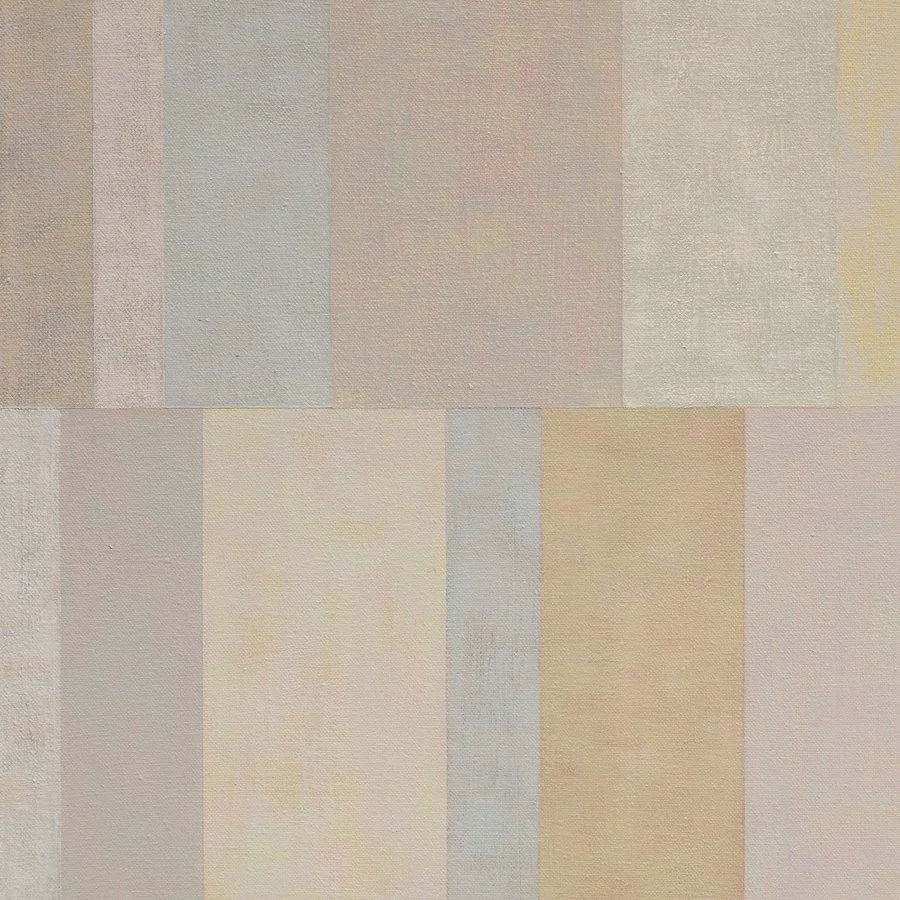I don't usually post the source material I use for my paintings. There is always the risk that it will ruin the magic of the illusion I'm trying to create. But this is a studio blog after all, and maybe just this once, I feel compelled to pull back the curtain for those who want to take a peek.
The finished painting is entitled "An Apparition of Two". It's 42" x 55", oil on canvas. This is an installation shot from a recent exhibition.
The composition is a merging of two images, both of which I dissolved through my inkprint process that I've described before. The original images are from a fashion editorial from the March 2010 issue of Vogue (Russia) and Gustav Klimt's "Mäda Primavesi" (1912). It was a weird twist of fate that I even tried to layer the images together, but once I did, the relationship between the two images became immediately and eerily apparent.
I'm intrigued by the ambiguity that results in the final painting. There is a strange merging of faces, of eras and of media. The two faces become an unstable apparition of a girl that appears no longer young yet not quite grown. Mirroring Klimt's iconic image of the past, the painting catches a photographed pose of the present in its reflection. Photograph and painting come together in a vulnerable exchange of emotion and empathy.
It was the first time I painted with glazes of color, and the richness of the surface surprised me. I want to push that more in the works to come, and hopefully continue to find fated pairings of source imagery. I may not share the source material again in the future though. So for now, I hope this peek behind the curtain enhances and doesn't detract from your experience of the painting.
The finished painting is entitled "An Apparition of Two". It's 42" x 55", oil on canvas. This is an installation shot from a recent exhibition.
 |
| "An Apparition of Two", 42" x 55", oil on canvas, Amanda Clyne (copyright 2012) |
I'm intrigued by the ambiguity that results in the final painting. There is a strange merging of faces, of eras and of media. The two faces become an unstable apparition of a girl that appears no longer young yet not quite grown. Mirroring Klimt's iconic image of the past, the painting catches a photographed pose of the present in its reflection. Photograph and painting come together in a vulnerable exchange of emotion and empathy.
It was the first time I painted with glazes of color, and the richness of the surface surprised me. I want to push that more in the works to come, and hopefully continue to find fated pairings of source imagery. I may not share the source material again in the future though. So for now, I hope this peek behind the curtain enhances and doesn't detract from your experience of the painting.










